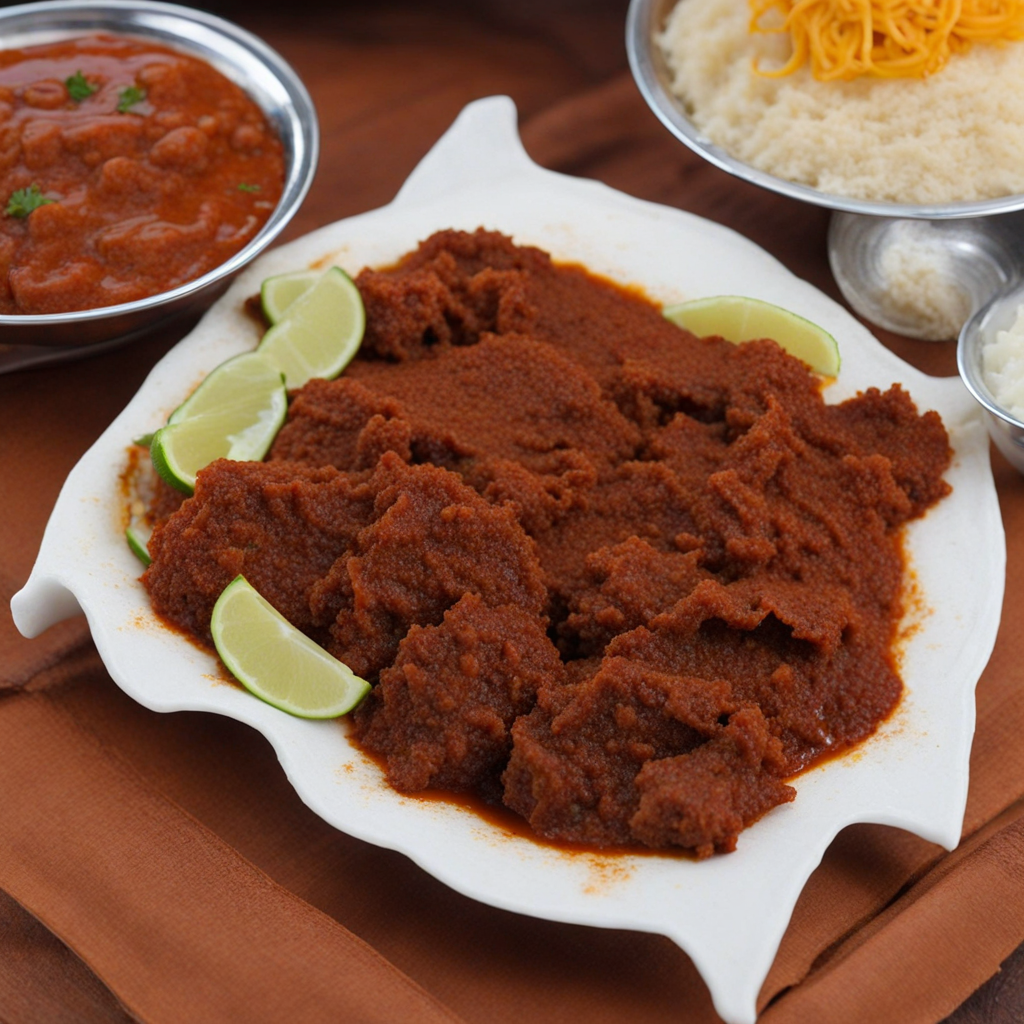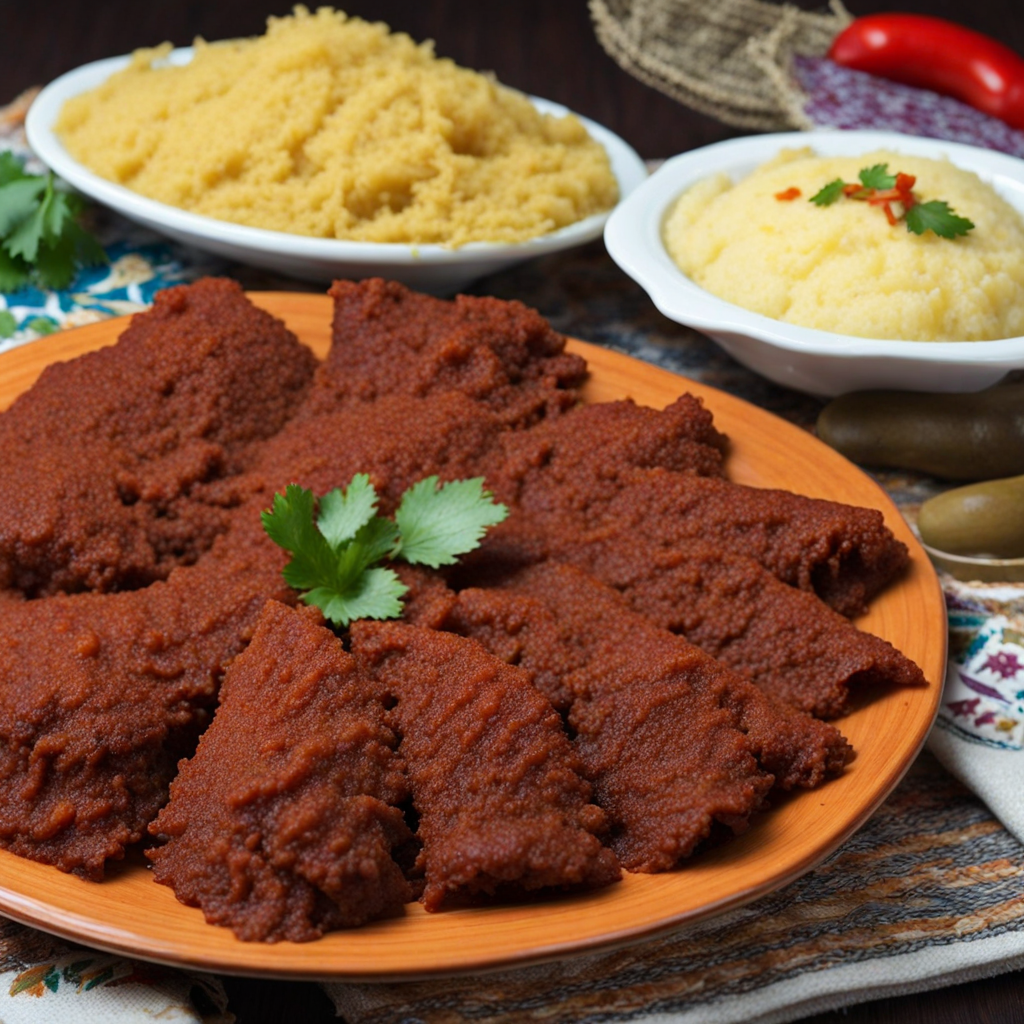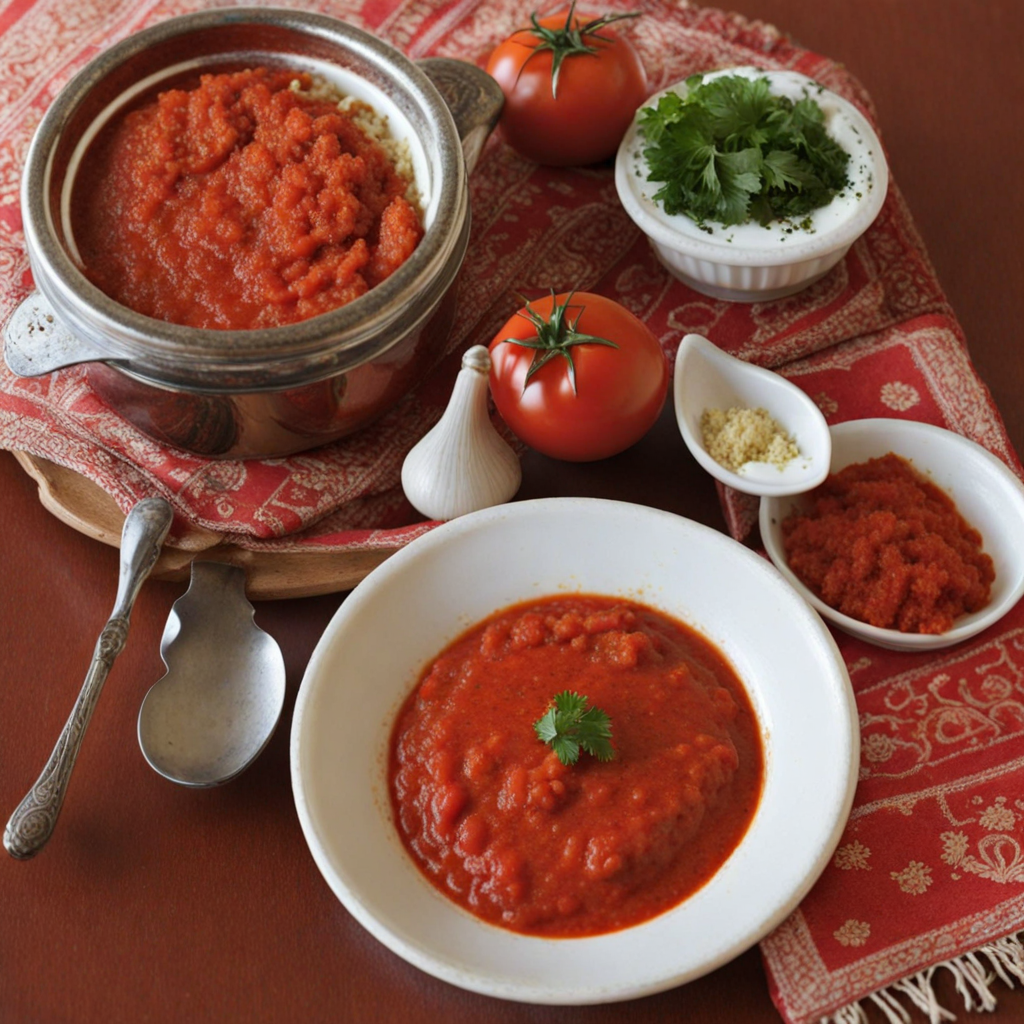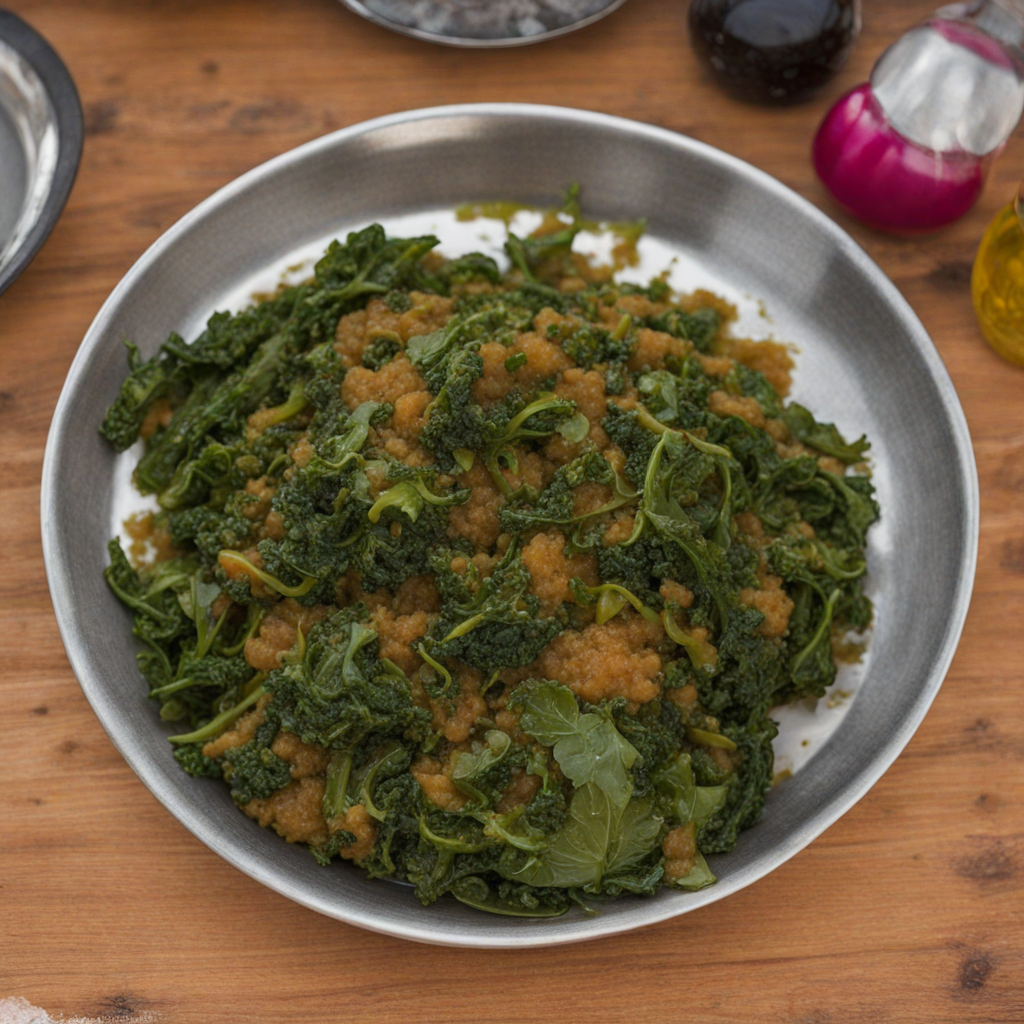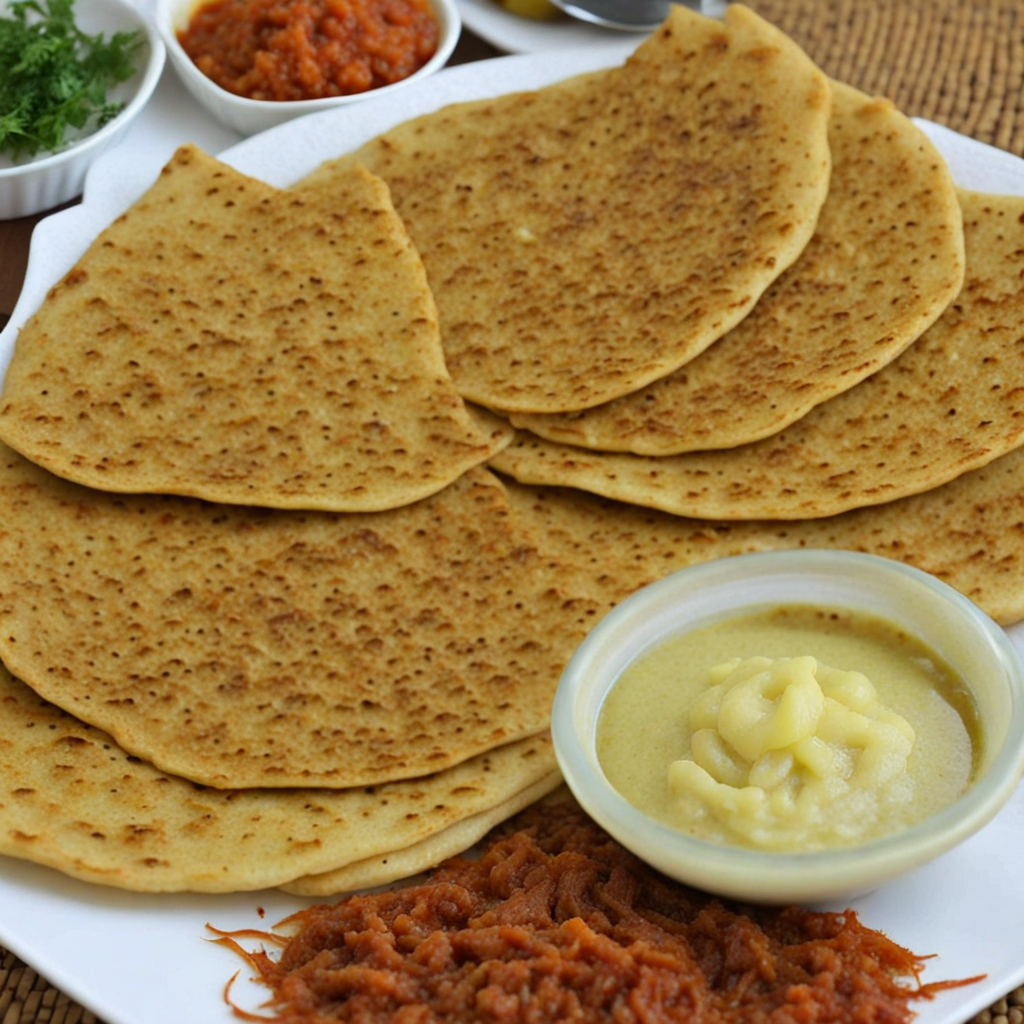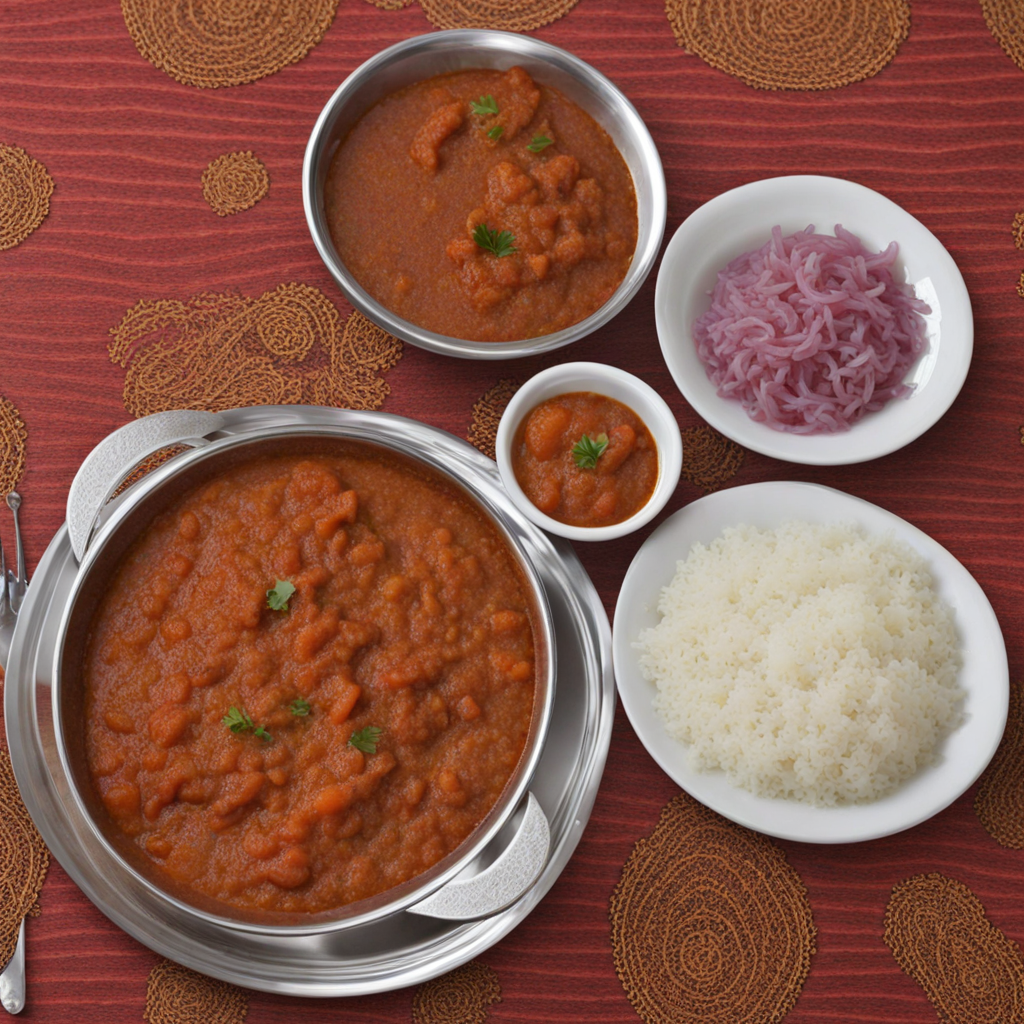Fata
Fata is a traditional Eritrean dish that offers a delightful blend of flavors and textures, making it a unique culinary experience. Typically enjoyed as a breakfast or light meal, Fata consists of thinly sliced flatbread, often made from teff flour, which is a staple grain in the region. The bread is soft and slightly chewy, providing the perfect base for the toppings that accompany it. The dish is often served with a spicy sauce or stew, featuring ingredients such as lentils, tomatoes, and a variety of spices that reflect the rich culinary heritage of Eritrea. What sets Fata apart is the way it is served and consumed. The flatbread is usually torn into pieces and mixed with the accompanying sauce, allowing the flavors to meld together harmoniously. The heat from the spices can add a tantalizing kick, while the earthy flavors of the lentils and tomatoes create a comforting balance. Each bite can be customized according to personal preference, enhancing the interactive nature of the meal. This communal aspect of eating Fata fosters a sense of togetherness, as friends and family gather around the table to share in the experience. Additionally, Fata can be complemented with various side dishes, such as fresh salads or yogurt, adding further layers of flavor and texture. The dish not only highlights the rich agricultural produce of Eritrea but also showcases the country's vibrant culinary traditions. With its combination of wholesome ingredients and the ability to cater to diverse palates, Fata is an inviting dish that promises to introduce adventurous eaters to the heart of Eritrean cuisine.
How It Became This Dish
The History of ፋታ (Fatta) from Eritrea: A Culinary Journey Through Time #### Origins of Fatta Fatta, a traditional dish from Eritrea, embodies the rich tapestry of the region's culinary heritage. Its origins can be traced back to the diverse cultural influences that have shaped Eritrea's history. Nestled in the Horn of Africa, Eritrea has long been a crossroads of trade and migration, where various ethnic groups, including the Tigrinya, Tigre, and Bilen, have contributed to the country’s vibrant gastronomy. The primary ingredient of Fatta is typically bread, often made from teff, a grain native to the region and revered for its nutritional value. In ancient times, teff was cultivated by the Aksumite civilization, which thrived between 100 AD and 940 AD. The cultivation of this grain laid the foundation for the region's staple foods. Teff flour is used to make injera, a fermented flatbread that serves as the base for many Eritrean dishes, including Fatta. Fatta itself is a dish that represents the fusion of simplicity and flavor. It is traditionally prepared by breaking down stale injera into pieces, which are then soaked in a spiced broth, often made with meat (usually lamb or chicken) and a mix of aromatic spices. This method of utilizing leftover bread not only minimizes waste but also transforms it into a hearty and comforting meal. #### Cultural Significance Fatta holds a place of honor in Eritrean culture, often enjoyed during communal gatherings and special occasions. The dish symbolizes hospitality and togetherness, reflecting the communal nature of Eritrean society. Sharing Fatta among family and friends fosters bonds and creates a sense of community, as diners often eat from a communal platter, using their hands to scoop up the flavorful mixture. In Eritrean tradition, food is not merely sustenance; it is a form of expression and a celebration of cultural identity. Fatta is often served during holidays, weddings, and significant life events, marking its importance in both everyday and ceremonial contexts. The preparation of Fatta can also be a communal activity, with family members gathering to cook, share stories, and pass down recipes through generations. The spices used in Fatta, such as berbere (a spice blend that includes chili, garlic, and other spices), contribute to the dish's rich flavor profile and reflect the region’s spice trade history. The incorporation of local ingredients and spices illustrates how Eritrean cuisine has evolved while maintaining its deep-rooted traditions. #### Development Over Time The preparation and presentation of Fatta have evolved over time, influenced by Eritrea's historical events and interactions with neighboring cultures. The Italian colonization of Eritrea in the late 19th and early 20th centuries introduced new culinary techniques and ingredients that have gradually made their way into Eritrean cuisine. While Fatta remains a traditional dish, modern variations may incorporate elements from Italian cuisine, such as richer sauces or different types of bread. In contemporary Eritrea, the diaspora community has played a significant role in the evolution of Fatta. As Eritreans migrated to different parts of the world, they brought their culinary traditions with them. In cities across Europe, North America, and the Middle East, Eritrean restaurants have sprung up, introducing Fatta to a broader audience. Here, Fatta is often adapted to local tastes, showcasing a blend of traditional and modern culinary practices. The global interest in ethnic cuisines has also contributed to the resurgence of traditional dishes like Fatta. Cooking classes, food blogs, and social media platforms have helped to raise awareness about Eritrean cuisine, encouraging a new generation to embrace their culinary heritage. Young Eritreans are now empowered to explore their roots, experimenting with Fatta in innovative ways while honoring traditional methods. #### Nutritional Aspects Beyond its cultural significance, Fatta is also appreciated for its nutritional benefits. Made primarily from injera and a meat-based broth, the dish is rich in carbohydrates, proteins, and essential nutrients. Teff, the main ingredient of injera, is high in iron, calcium, and fiber, contributing to a balanced diet. The inclusion of vegetables and legumes in the broth further enhances its nutritional profile, making Fatta a wholesome meal. In recent years, there has been a growing emphasis on healthy eating and sustainable food practices. As a result, the use of organic ingredients and local produce in the preparation of Fatta has become more widespread. This shift not only promotes health but also supports local farmers and preserves traditional agricultural practices in Eritrea. #### Fatta in a Global Context As Eritrean cuisine gains recognition on the global stage, Fatta has become a symbol of Eritrean identity and pride. Food festivals, cultural events, and international cooking competitions have highlighted Eritrean dishes, allowing people from diverse backgrounds to appreciate the flavors and stories behind them. The dish embodies the resilience of the Eritrean people, who have maintained their culinary traditions despite historical adversities. The rise of food tourism has also contributed to the interest in Fatta, with travelers seeking authentic culinary experiences. Visitors to Eritrea are often eager to try Fatta in its traditional setting, where they can enjoy the dish alongside local beverages like ziban, a traditional coffee drink. Such experiences foster cultural exchange and understanding, bridging the gap between different communities through the universal language of food. #### Conclusion Fatta is more than just a dish; it is a reflection of Eritrea's rich cultural heritage, a celebration of community, and an enduring symbol of resilience and adaptability. As it continues to evolve, Fatta remains deeply rooted in tradition while embracing the influences of the modern world. Whether enjoyed in a bustling Eritrean restaurant or shared among family during a special occasion, Fatta will always hold a special place in the hearts of those who partake in its flavors and the stories it represents. In this way, Fatta not only nourishes the body but also feeds the soul, connecting generations through the shared love of food and heritage. As Eritrean communities worldwide continue to celebrate and innovate, Fatta will undoubtedly remain a cherished dish for years to come, embodying the spirit of a proud and resilient nation.
You may like
Discover local flavors from Eritrea


